About this detail of the Tiger
The design of the Tiger's track links begins with its predecessor vehicle, the VK 36.01. This prototype tank had 16 tyres per side, arranged in 4 rows of 4 each.
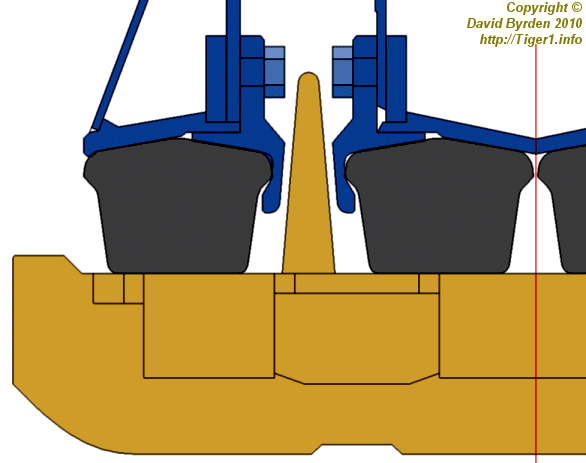
Each track link had two guide teeth. As shown in this diagram, two wheels straddled each tooth, with the locking flanges of their tyres making intermittent contact with the tooth.
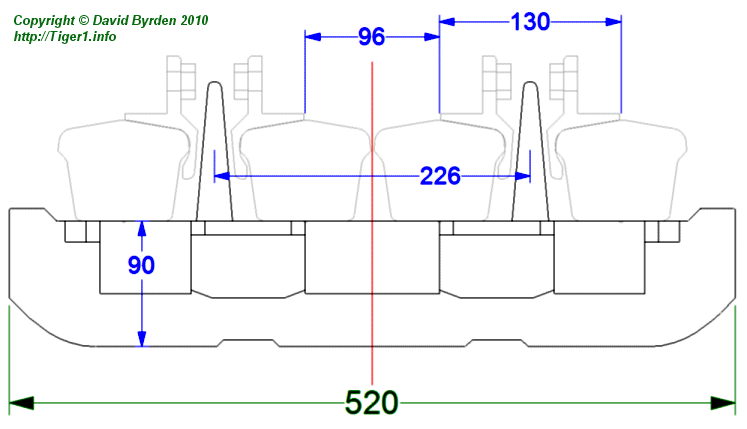
By repeating this arrangement twice, and adding gaps at each end to grip the teeth of the sprocket wheel, the designers arrived at a width of 520mm for the track links of the VK 36.01. As usual in German designs, the links were symmetric about their center line. The spacing that I have shown between tyres is only approximate, because I have seen no German diagrams of the wheels.
The wheels and tracks of the VK 36.01 were carried over into the VK 45.01 which became the Tiger E. But, about 4 months into the design, it was realised that the new tank's weight had become too much for the wheels.
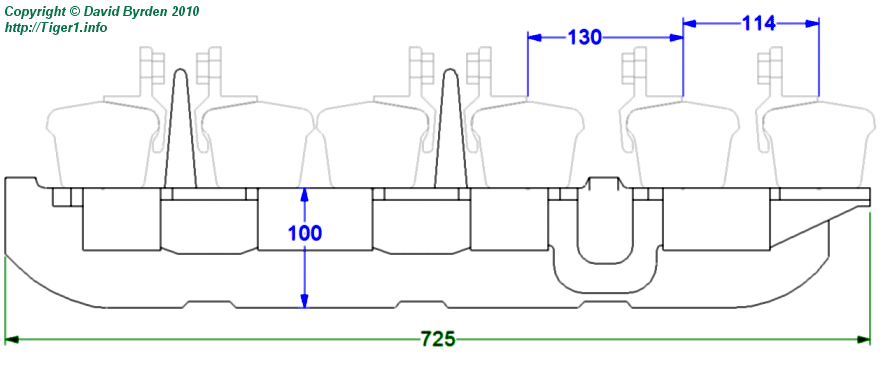
As a result, one extra wheel was added to the outer end of each axle. The outer end of the track link was extended to make the overall width 725mm. This diagram shows the approximate locations of the new wheels; because the wheels were staggered on alternate axles, there are two new positions.
The sprocket wheel was unchanged, so the extended part of the track link now lay outside of the hole for the sprocket teeth. To compensate for the weakness at this hole a bridge was formed around it, as you can see at the right of the diagram. The depth of the track link was also increased by 10mm.
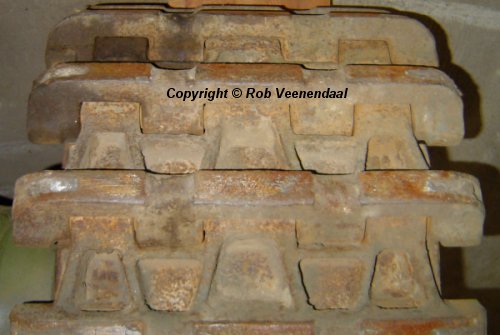
The additional wheels had to be removed when the Tiger was configured for rail transport. Therefore the old 520mm track of the VK 36.01 was retained as the Tiger's 'transport' track. It is shown in this photo from Saumur museum.
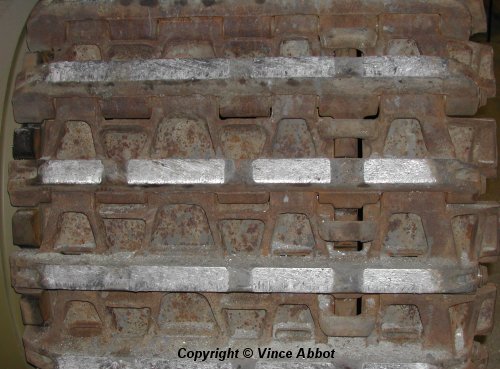
This is the standard 725mm track. Note that the left side of this track is identical to the left side of the old 520mm track. On the other side, you can see the bridge over the hole for the sprocket teeth.
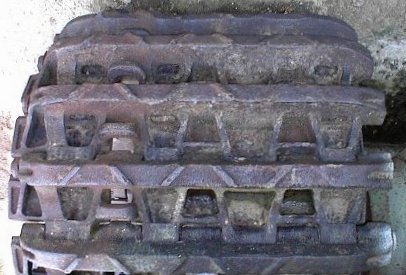
The standard track was modified by the addition of ice cleats in October 1943. This raised the height of the tank by a further 15mm.
Because the original track links were extended on the outside, they became asymmetric, with different links for the left and right sides of the Tiger. The first 20 tanks were shipped with such tracks. This obliged the crews to carry two kinds of spare links, so the manufacturers soon dropped the right-hand links and used the others exclusively on both sides of the vehicle.
The first unit to use Tigers, S.Pz.Abt. 502, apparently swapped around the tracks on some of their tanks to achieve the same end. In photographs of their Tigers, we can see some tanks carrying 'mirrored' tracks and others not. If we name the links 'L' and 'R', then these are the Tigers whose track sets we have identified in photographs of the unit:
100 : L,R
122 : L,R
102 : L,L
111 : L,L
121 : R,R